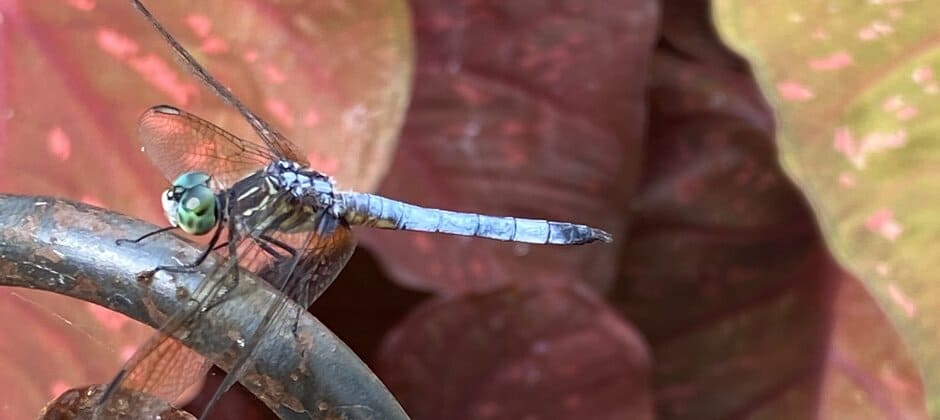Share this article
Warmer weather means duller dragonflies
As climates warm, many dragonfly species are losing dark pigmentations that attract more heat—but may also attract more mates
Since the time of Charles Darwin, scientists have known that organisms adapt to living in different climates, but for some biologists, watching their adaptations is like working in a living laboratory.
Obviously, it’s a longstanding question, but in light of ongoing climate change, it’s probably one of biologists’ most pressing questions,” said Michael Moore, a postdoctoral fellow at the Living Earth Collaborative at Washington University in St. Louis.
Over the last several decades, researchers have been able to show how organisms adapt survival-related traits to climate, but they’ve paid less attention to how climate has impacted mating. “A big part of our understanding of organisms is that they don’t just need to survive, but they also need to mate,” Moore said. “We were interested in whether animals might also have to adapt mating-related traits in order to best fit to living in different climates.”
Moore thought dragonflies would make the best subject for this question. Males have dark coloration on their wings that they use to attract mates, but those dark colors also absorbs more heat and sunlight. “It’s a good system to try to explore whether mating-related traits might be adapted to warmer climates,” he said.
Moore led a study published in the Proceedings of the National Academy of Sciences looking at if dragonflies have adapted with climate historically and what is projected to happen with an even warmer climate in the future.
The team compiled a database of 319 dragonfly species using field guides and 3,000 citizen scientist observations from the mobile iNaturalist app. They examined the wings of dragonflies in photos that were submitted to the app and measured the amount of wing pigmentation on 10 different species.
Looking at historical and current climates, Moore and his colleagues found evidence that in warmer climates, males in all of the dragonfly species have developed wings with less pigment over the years. Then, they looked at warm years and cold years and found that dragonflies had less wing coloration in warmer years. “It appears natural selection is removing more ornamented males with wing coloration from populations in those years,” he said.
When the team projected climate change into the future, they found that dragonflies will have to lose their coloration to adapt to warmer climates in the next decade to century. If they are unable to do so, Moore said, some species may go extinct.
Moore said they don’t know yet if the lack of coloration in males will impact breeding. Females may have difficulty recognizing what males they should be mating with, which can result in lower quality mates, or them mating with the wrong species altogether.
The team also found that female dragonflies’ colors weren’t impacted at all by warm climates. Moore said it’s possible that’s because females spend more time foraging in the meadows, in cooler parts of their habitats.
For now, he said, conservation efforts should focus on males in warmer climates. “Species with ornamentation could be more vulnerable to extinction in warmer climates right now,” he said.
Header Image: An adult blue dasher (Pachydiplax longipennis) dragonfly. Credit: Michael Moore








